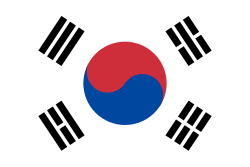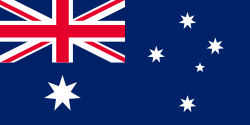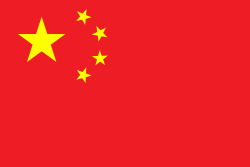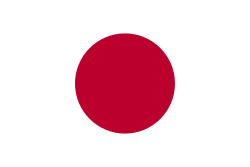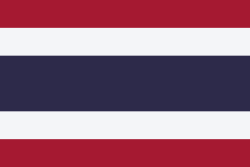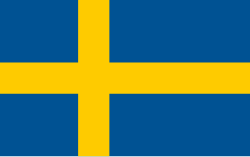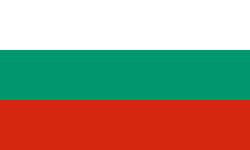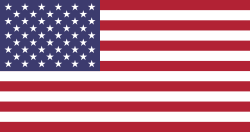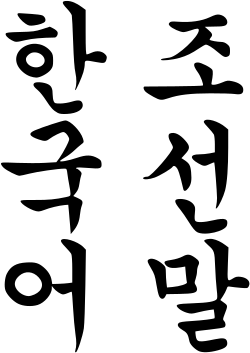Jang Su-jeong
| Jang Su-jeong | |||||||||||||
 | |||||||||||||
| 2022 in der Qualifikation von Wimbledon | |||||||||||||
| Nation: | |||||||||||||
| Geburtstag: | 13. März 1995 (29 Jahre) | ||||||||||||
| 1. Profisaison: | 2009 | ||||||||||||
| Spielhand: | Rechts, beidhändige Rückhand | ||||||||||||
| Trainer: | Kim Il-soon | ||||||||||||
| Preisgeld: | 884.963 US-Dollar | ||||||||||||
| Einzel | |||||||||||||
| Karrierebilanz: | 410:289 | ||||||||||||
| Karrieretitel: | 0 WTA, 1 WTA Challenger, 12 ITF | ||||||||||||
| Höchste Platzierung: | 114 (11. Juli 2022) | ||||||||||||
| Aktuelle Platzierung: | 260 | ||||||||||||
| |||||||||||||
| Doppel | |||||||||||||
| Karrierebilanz: | 188:131 | ||||||||||||
| Karrieretitel: | 0 WTA, 1 WTA Challenger, 17 ITF | ||||||||||||
| Höchste Platzierung: | 82 (22. Mai 2023) | ||||||||||||
| Aktuelle Platzierung: | 224 | ||||||||||||
| Letzte Aktualisierung der Infobox: 24. Februar 2025 | |||||||||||||
| Quellen: offizielle Spielerprofile bei der ATP/WTA (siehe Weblinks) | |||||||||||||
Jang Su-jeong (kor. 장수정, * 13. März 1995 in Busan) ist eine südkoreanische Tennisspielerin.
Karriere
Jang begann mit acht Jahren das Tennisspielen und bevorzugt Hartplätze. Sie gewann bisher 12 Einzel- und 17 Doppeltitel auf Turnieren der ITF Women’s World Tennis Tour. Im Juli 2022 gewann Jang in Båstad ihren ersten Einzeltitel auf der WTA Challenger Tour, im Juni 2023 ihren ersten WTA-Challenger-Doppeltitel in Gaiba.
Bei den KDB Korea Open 2013 in Seoul stand sie dank einer Wildcard des Turnierveranstalters zum ersten Mal im Hauptfeld eines WTA-Turniers.
2014 trat sie erstmals für die südkoreanische Fed-Cup-Mannschaft an; ihre Fed-Cup-Bilanz weist bislang 16 Siege bei 10 Niederlagen aus.
Turniersiege
Einzel
| Nr. | Datum | Turnier | Kategorie | Belag | Finalgegnerin | Ergebnis |
|---|---|---|---|---|---|---|
| 1. | 23. Februar 2014 | ITF $15.000 | Hartplatz | 6:3, 7:66 | ||
| 2. | 9. März 2014 | ITF $15.000 | Rasen | 6:1, 6:3 | ||
| 3. | 25. Mai 2014 | ITF $25.000 | Rasen | 6:4, 6:3 | ||
| 4. | 1. März 2015 | ITF $15.000 | Hartplatz | 6:3, 6:3 | ||
| 5. | 28. März 2015 | ITF $15.000 | Hartplatz | 6:2, 6:4 | ||
| 6. | 10. April 2016 | ITF $25.000 | Hartplatz | 6:4, 1:6, 6:3 | ||
| 7. | 28. Juli 2019 | ITF W25 | Hartplatz | 6:1, 2:6, 6:4 | ||
| 8. | 21. März 2021 | ITF W15 | Sand | 4:6, 6:3, 6:2 | ||
| 9. | 22. August 2021 | ITF W25 | Sand | 6:3, 6:2 | ||
| 10. | 3. April 2022 | ITF W60 | Sand | 6:73, 6:1, 6:4 | ||
| 11. | 9. Juli 2022 | WTA Challenger | Sand | 3:6, 6:3, 6:1 | ||
| 12. | 12. März 2023 | ITF W60 | Hartplatz (Halle) | 6:1, 6:4 | ||
| 13. | 2. April 2023 | ITF W25 | Hartplatz | 2:6, 6:3, 6:2 |
Doppel
| Nr. | Datum | Turnier | Kategorie | Belag | Partnerin | Finalgegnerinnen | Ergebnis |
|---|---|---|---|---|---|---|---|
| 1. | 29. März 2013 | ITF $25.000 | Sand | 7:64, 4:6, [10:8] | |||
| 2. | 7. März 2014 | ITF $15.000 | Rasen | 6:1, 1:6, [10:4] | |||
| 3. | 27. März 2015 | ITF $15.000 | Hartplatz | 6:4, 6:4 | |||
| 4. | 25. Juli 2015 | ITF $25.000 | Hartplatz | 6:0, 6:3 | |||
| 5. | 5. September 2015 | ITF $25.000 | Teppich | 6:3, 2:6, [10:8] | |||
| 6. | 8. April 2017 | ITF $25.000 | Hartplatz | 6:3, 3:6, [10:4] | |||
| 7. | 17. August 2019 | ITF W25 | Hartplatz | 7:5, 6:1 | |||
| 8. | 27. März 2021 | ITF W15 | Sand | kampflos | |||
| 9. | 3. April 2021 | ITF W15 | Sand | 6:2, 2:6, [10:7] | |||
| 10. | 24. Juli 2021 | ITF W25 | Sand | 3:6, 6:4, [10:7] | |||
| 11. | 26. März 2022 | ITF W60 | Sand | 3:6, 6:2, [10:5] | |||
| 12. | 18. Juni 2022 | ITF W100 | Rasen | 67:7, 6:0, [11:9] | |||
| 13. | 29. Oktober 2022 | ITF W60 | Hartplatz (Halle) | 6:3, 6:2 | |||
| 14. | 1. April 2023 | ITF W25 | Hartplatz (Halle) | 6:0, 6:4 | |||
| 15. | 6. Mai 2023 | ITF W80 | Hartplatz | 7:63, 2:6,[10:8] | |||
| 16. | 24. Juni 2023 | WTA Challenger | Rasen | 6:3, 3:6, [10:6] | |||
| 17. | 28. April 2024 | ITF W100 | Hartplatz | 7:5, 3:6, [10:8] | |||
| 18. | 11. Januar 2025 | ITF W75 | Hartplatz | 4:6, 6:0, [10:6] |
Abschneiden bei Grand-Slam-Turnieren
Dameneinzel
| Turnier | 2014 | 2015 | 2016 | 2017 | 2018 | 2019 | 2020 | 2021 | 2022 | 2023 | 2024 | Karriere |
|---|---|---|---|---|---|---|---|---|---|---|---|---|
| Australian Open | — | — | Q1 | Q2 | Q1 | — | — | — | 1 | Q2 | Q2 | 1 |
| French Open | — | — | — | Q3 | Q1 | — | — | — | Q1 | Q1 | — | — |
| Wimbledon | — | Q1 | — | Q1 | — | — | — | Q3 | Q1 | — | — | |
| US Open | Q1 | — | Q1 | Q3 | Q1 | — | — | — | Q1 | Q2 | Q3 | — |
Zeichenerklärung: S = Turniersieg; F, HF, VF, AF = Einzug ins Finale / Halbfinale / Viertelfinale / Achtelfinale; 1, 2, 3 = Ausscheiden in der 1. / 2. / 3. Hauptrunde; Q1, Q2, Q3 = Ausscheiden in der 1. / 2. / 3. Qualifikationsrunde; nicht ausgetragen
Juniorinneneinzel
| Turnier | 2011 | 2012 | Karriere |
|---|---|---|---|
| Australian Open | 2 | 1 | 2 |
| French Open | — | — | — |
| Wimbledon | — | — | — |
| US Open | AF | — | AF |
Juniorinnendoppel
| Turnier | 2011 | 2012 | Karriere |
|---|---|---|---|
| Australian Open | 1 | AF | AF |
| French Open | — | — | — |
| Wimbledon | — | — | — |
| US Open | AF | — | AF |
Weblinks
- WTA-Profil von Jang Su-jeong (englisch)
- ITF-Profil von Jang Su-jeong (englisch)
- ITF-Junioren-Profil von Jang Su-jeong (englisch)
- Billie-Jean-King-Cup-Statistik von Jang Su-jeong (englisch)
| Personendaten | |
|---|---|
| NAME | Jang, Su-jeong |
| ALTERNATIVNAMEN | 장스와정 (koreanisch) |
| KURZBESCHREIBUNG | südkoreanische Tennisspielerin |
| GEBURTSDATUM | 13. März 1995 |
| GEBURTSORT | Busan, Südkorea |
Auf dieser Seite verwendete Medien
Pictograms of Olympic sports - Tennis. This is unofficial sample picture. Images of official Olympic pictograms for 1948 Summer Olympics and all Summer Olympics since 1964 can be found in corresponding Official Reports.
Flag of Australia, when congruence with this colour chart is required (i.e. when a "less bright" version is needed).
See Flag of Australia.svg for main file information.Flagge Österreichs mit dem Rot in den österreichischen Staatsfarben, das offiziell beim österreichischen Bundesheer in der Charakteristik „Pantone 032 C“ angeordnet war (seit Mai 2018 angeordnet in der Charakteristik „Pantone 186 C“).
Verwendete Farbe: National flag | South African Government and Pantone Color Picker
| Grün | gerendert als RGB 0 119 73 | Pantone 3415 C |
| Gelb | gerendert als RGB 255 184 28 | Pantone 1235 C |
| Rot | gerendert als RGB 224 60 49 | Pantone 179 C |
| Blau | gerendert als RGB 0 20 137 | Pantone Reflex Blue C |
| Weiß | gerendert als RGB 255 255 255 | |
| Schwarz | gerendert als RGB 0 0 0 |
Flagge des Vereinigten Königreichs in der Proportion 3:5, ausschließlich an Land verwendet. Auf See beträgt das richtige Verhältnis 1:2.
Flagge des Vereinigten Königreichs in der Proportion 3:5, ausschließlich an Land verwendet. Auf See beträgt das richtige Verhältnis 1:2.
Chinese Taipei Olympic Flag. According to the official website of Chinese Taipei Olympic Committee, Blue Sky(circle) & White Sun(triangles) above the Olympic rings is neither the National Emblem of the Republic of China, nor the Party Emblem of Kuomintang (KMT), but a design in between, where the triangles do not extend to the edge of the blue circle, as registered at International Olympic Committee in 1981 and digitally rendered in 2013. Besides, the blue outline of the five-petaled plum blossom is broader than the red one. Moreover, the CMYK code of the blue one and the Blue Sky & White Sun is "C100-M100-Y0-K0", and different from the Olympic rings (C100-M25-Y0-K0). Note that it's the only version recognized by IOC.
Chinese Taipei Olympic Flag. According to the official website of Chinese Taipei Olympic Committee, Blue Sky(circle) & White Sun(triangles) above the Olympic rings is neither the National Emblem of the Republic of China, nor the Party Emblem of Kuomintang (KMT), but a design in between, where the triangles do not extend to the edge of the blue circle, as registered at International Olympic Committee in 1981 and digitally rendered in 2013. Besides, the blue outline of the five-petaled plum blossom is broader than the red one. Moreover, the CMYK code of the blue one and the Blue Sky & White Sun is "C100-M100-Y0-K0", and different from the Olympic rings (C100-M25-Y0-K0). Note that it's the only version recognized by IOC.
Flag of Canada introduced in 1965, using Pantone colours. This design replaced the Canadian Red Ensign design.
The Korean characters "한국어, 조선말" meaning Korean, made using the GungsuhChe truetype font
Autor/Urheber: si.robi, Lizenz: CC BY-SA 2.0
Jang WMQ22 (9)

